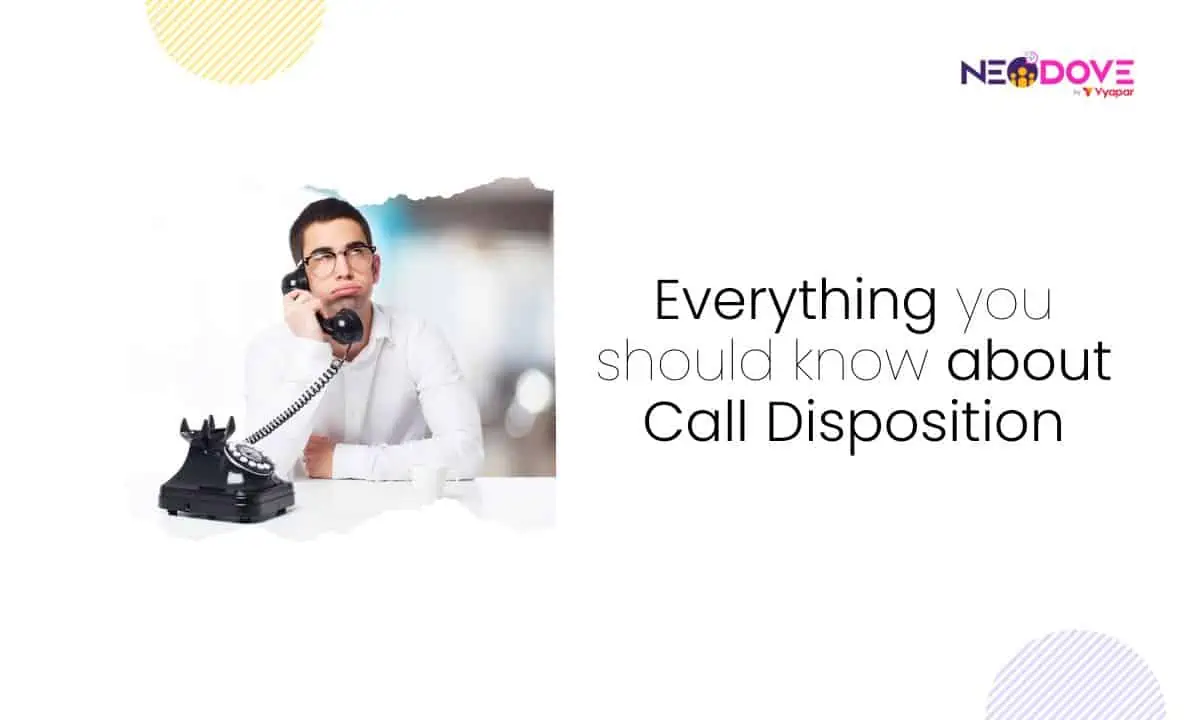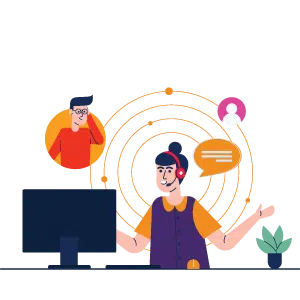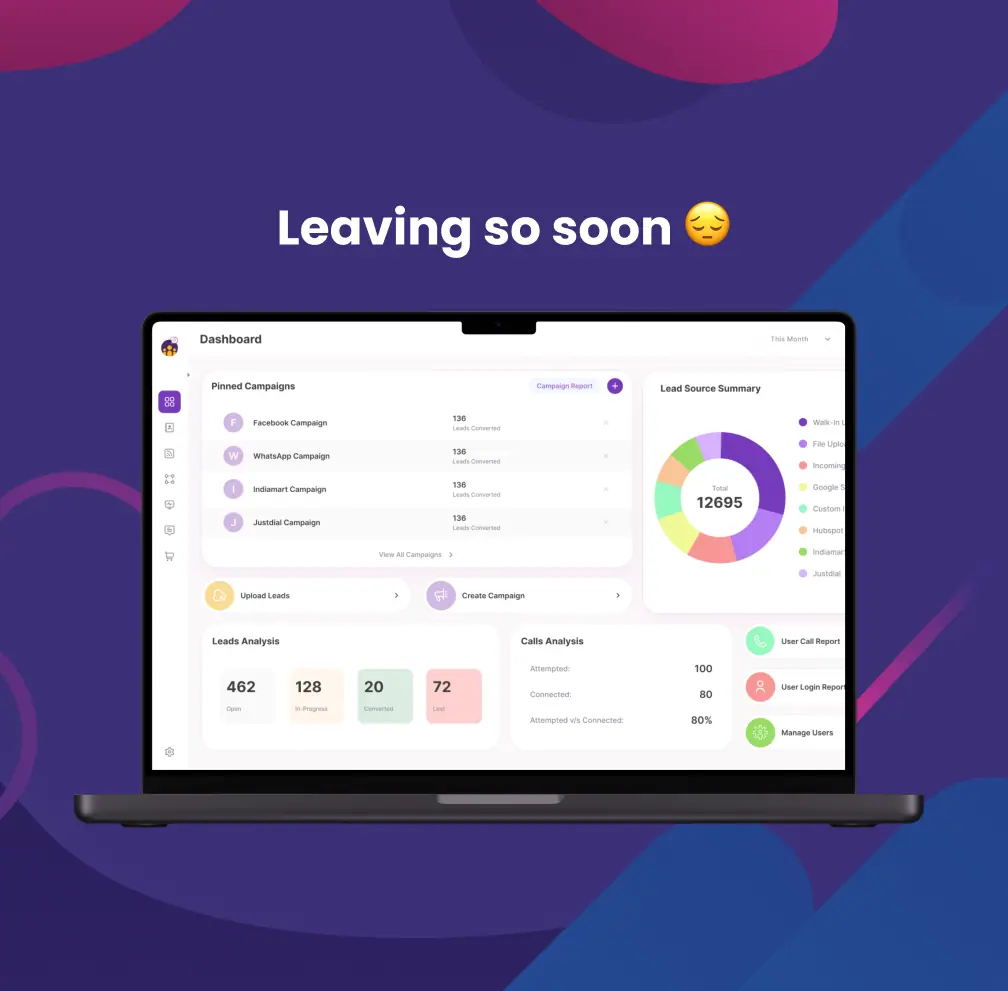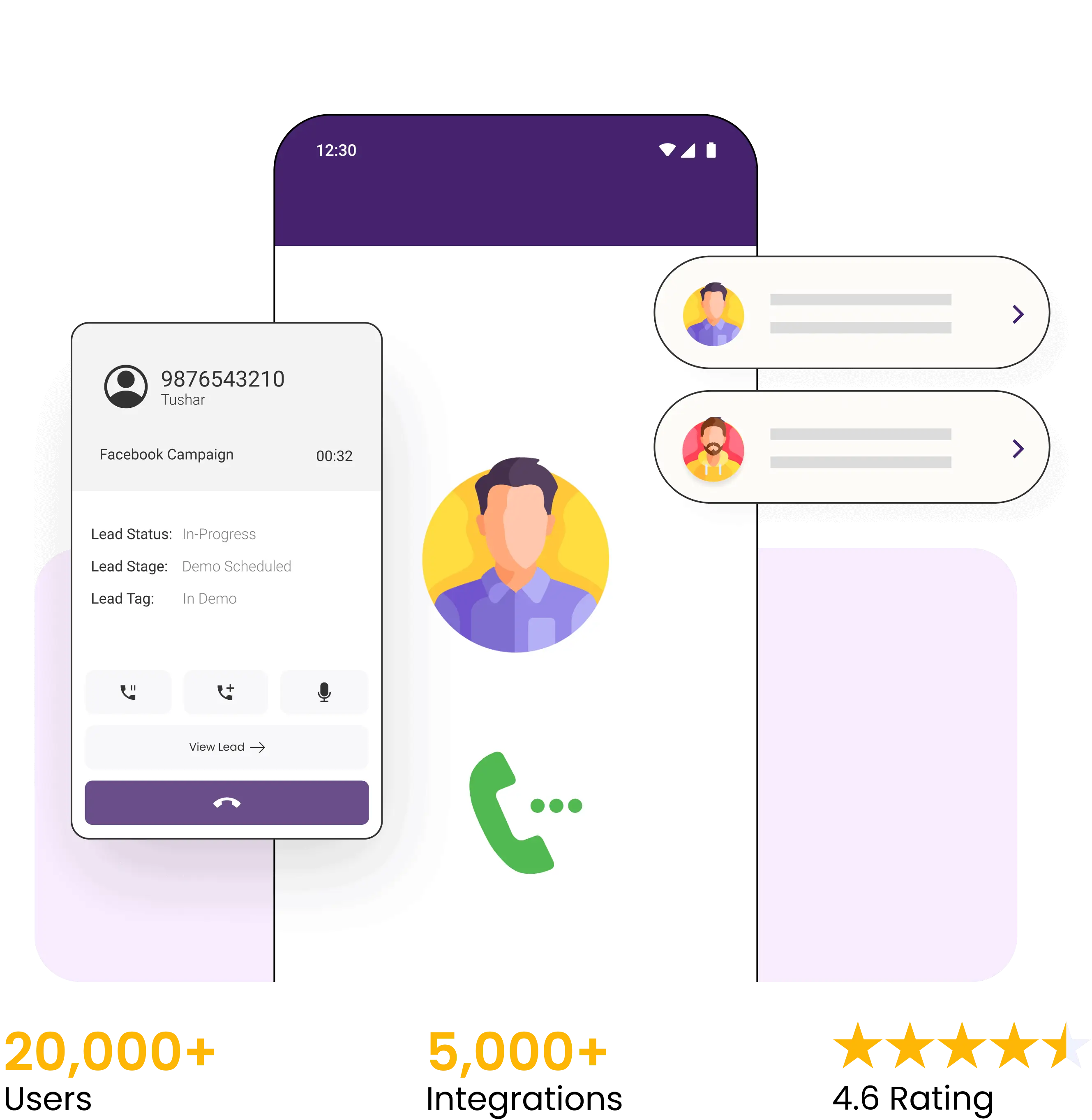FREE GUIDE
Get your copy of the ultimate guide to lead generation through telecalling (scripts included)

Table of Contents
Toggle👉🏼 Key Takeaway:

Were you aware that over 56% of calls coming into your business could be viable leads?
Do you want to organize your calls more easily?
Or do you want a categorization system for your calls and their various outcomes?
Well then, call dispositions may be what you’ve been looking for.
Contact centers can reduce agent workload by implementing call dispositions. They’re a way to keep track of the outcomes of your inbound and outbound calls.
By using this method, you’ll be able to keep track of how calls are performing. Moreover, you’ll also be able to see how your team is doing.
For contact centers, the ability to track call outcomes and identify areas of improvement is a valuable asset.
In this article, we will look at call disposition and how call disposition codes are useful in business.
The label attached to the outcome of a phone call is known as a “call disposition”.
You should know that there’s no one-size-fits-all approach to sales calls. Sometimes your customers or prospects ask for a demonstration while others are unsure or uninterested.
Regardless of whether or not a sale is made, call dispositions are essential data that you should document.
After a sales call, dialer CRMs demand your agents to log the call’s outcome. A well-integrated CRM prompts reminders and processes to keep things going for your customers and business alike.
Once your customer agrees to purchase or wants a demo, their status in the CRM is marked as ‘interested.’ Your customer is then added to the prospect list and demo invitations are sent. Subsequently, a series of automated actions will be carried out.
The CRM will upgrade your customer to a DND list if they state that they’re “not interested”. They will stay on this list until the time it’s acceptable to re-engage with your client.
Typically, it’s customary for agents to do disposition updates immediately after they complete their after-call work (ACW). The next call is connected after your agent completes the disposition.
Call disposition is vital because it serves as a treasure map in the world of customer service. Each call gets marked with a specific code, to give valuable insights into customer interactions.
These call disposition codes help measure agent performance, identify business opportunities, and improve the overall customer experience.
Moreover, call disposition codes help guide teams to ensure no customer gets left behind. Armed with this data, businesses can make informed decisions and steer their course towards success.
So, set sail on a journey of understanding and enhancing your customer service with the powerful tool of call disposition.
Check out: Call Analytics
Here are two instances with different sales motions to show what your call dispositions could look like.
The first is inbound call dispositions, also identified as “lead follow-up.” Some call disposition examples of this form are:
Other than inbound call disposition, outbound call disposition is another type often used in sales. Also known as “Prospecting” or “Cold Calling,” some outbound call disposition examples you should know are:
Also read: What is Abandoned calls?
You use call disposition codes to mark calls and sort them into various categories. Agents in call centers can use these codes to provide details about the completed calls, such as:
When the disposition window appears, the code is updated as soon as your agent completes a call. After that, your entire team can access that call information.
The problem of “low first-call resolution rates” can be effectively addressed by implementing call disposition codes such as:
The customer decided to end the call while waiting on hold for assistance, possibly due to long wait times or other reasons.
The customer’s request for an appointment or follow-up has been successfully booked and confirmed for a later date or time.
The customer couldn’t engage in the conversation at that moment because they were occupied or preoccupied.
The customer asked for a return call from the agent or representative at a more convenient time.
The customer expressed their dissatisfaction, concern, or issue related to the product, service, or experience.
The call was successfully handled and resolved, meeting the customer’s needs or resolving their concerns.
The dialed number was not in service or incorrect, preventing the connection of the call.
The dialed number was found to be inaccurate or invalid during the call attempt.
The customer indicated their lack of interest or declined the product or service offered.
The customer sought information or had inquiries about a specific product during the call.
The call requires further action, such as additional research, callbacks, or follow-up steps to address the customer’s needs.
The call needs to be escalated or forwarded to a supervisor for further resolution or decision-making.
The customer requested a refund for a product or service during the call.
The call resulted in a successful closure of a sale or completion of a transaction with the customer.
The customer sought technical assistance, guidance, or troubleshooting during the call for their product or service.
You can customize these codes to fit your current process. Codes like these are merely examples of what your call disposition function could look like. To get the best results, you should work with your agents to choose which codes to utilize.
When it comes to call disposition codes, finding the right number is like creating a perfect recipe.
Too few codes, and you miss out on essential insights. Too many, and things get confusing. Aim for a balanced approach with a handful of meaningful codes that cover the most common call outcomes.
It’s like having just the right ingredients to make a delicious dish. Customize the codes to fit your business needs, and be open to adding more as your business grows.
Remember, a well-curated set of call disposition codes enhances your customer service flavor and brings success to your table!




Call disposition codes are essential tools used to categorize and track the outcomes of phone interactions with customers.
To ensure the effective use of call disposition codes, here are five best practices to follow:
Create a list of disposition code categories that align with your business objectives.
Whether it’s “Resolved,” “Escalated,” or “Follow-up Required,” having well-defined call disposition codes ensures consistency in data collection. This makes it easier to analyze trends and make data-driven decisions to improve customer experience.
Provide your agents with comprehensive training on how to use call disposition codes effectively. Teach them the purpose of each code and when to apply them during a call.
Encourage agents to use the call disposition codes consistently and avoid guessing or assuming outcomes. A well-trained team ensures accurate data, leading to better business insights.
While it might be tempting to create numerous call disposition codes for every possible scenario, simplicity is key. Limit the number of codes to a manageable level, focusing on the most common call outcomes.
Too many codes can confuse agents and hinder data analysis, making it challenging to identify actionable trends.
Regularly review call logs and disposition code usage to ensure agents are applying the call disposition codes correctly.
Analyze trends to identify areas for improvement and celebrate successes. Monitoring helps maintain data integrity and enables continuous improvement in customer service.
Combine call disposition codes with customer feedback data to gain a complete understanding of customer satisfaction.
Linking feedback to specific call outcomes allows you to identify pain points and track the effectiveness of resolutions. This empowers your team to make proactive changes and deliver exceptional customer experiences.
“Your call disposition speaks volumes about your commitment to providing exceptional customer experiences. It’s not just a code; it’s a reflection of your brand’s values.” – Tony Hsieh, former CEO of Zappos
A well-crafted call disposition report ensures you have all the essential data to savor customer service success.
Let’s explore what makes up a delightful call disposition report!
Include a clear list of call disposition codes and their meanings. This allows you to categorize calls accurately and get insights into customer interactions, agent performance, and common call outcomes.
Keep track of the total call volume over a specific period and identify any trends. Monitoring call patterns helps you understand peak call times and areas where additional support may be needed.
Measure agent performance using call disposition data. Metrics like average handling time and customer satisfaction scores offer valuable insights into individual and team achievements.
Incorporate customer feedback and complaint details tied to specific call disposition codes. This helps identify areas for improvement, gauge customer sentiment, and take targeted actions to enhance service quality.
Track sales-related call disposition codes to measure conversion rates. Understanding how many calls result in successful sales closures helps optimize sales strategies and maximize revenue.
Monitor call abandonment rates and average wait times. This data highlights customer patience and helps improve call center efficiency by reducing wait times and addressing potential frustrations.
Include information on calls that require follow-up actions or supervisor attention. This ensures no customer concern slips through the cracks and enables timely resolution.
Combine call disposition data with other business metrics to gain deeper insights. This integrated approach empowers decision-makers to make data-driven choices for improved customer experiences.
Call disposition has a substantial impact on your operations. Furthermore, it can significantly improve your customer support and ensure constant revenue streams.
[image here]
The status of each phone call is communicated to your operations team via call disposition. This data is critical since it helps identify the patterns in your telemarketing strategy.
Team leaders can use this actionable data to identify areas for improvement or new revenue streams.
Your agents will be more resourceful if they smartly tag the calls with appropriate call dispositions. This saves valuable time, increases productivity, and relieves your agents of mundane tasks.
With call disposition, call data is logically constructed and is more uniform. Your agents and managers can rely on this information without performing any additional verification.
Using call disposition codes, callers can be labeled as disconnected, inactive, busy signal; do not contact; and so on. Your business can use the disposition code to identify these numbers and remove them from the campaign list.
When the new list is created, this allows for greater efficiency. Alongside this, it also allows for compliance with the DNC (Do Not Call).
You can evaluate and learn about diverse client behaviors using call dispositions. As a result, your team will be able to design a customer interaction strategy tailored to their specific needs.
You can even modify your call campaigns as often as necessary to meet your KPIs.
Every lead is a possible source of income. To get the most out of each lead, you need to maximize the likelihood of greater conversion. As such, you can automate every sales conversation with the aid of call disposition.
Call disposition is an essential feature of call centers.
With call disposition, your calling agents are spared the tedious task of taking notes. Moreover, it analyses each input to point out any patterns or mistakes.
Many companies have come up with creative ways to leverage call dispositions. For example, rewarding your agents whenever they made an upsell or cross-sell while on the phone. The call disposition made it easy to identify the agents as well as the calls.
Analytics will play a key role in the future of call centers. Using call disposition trends to forecast hot leads will become a vital component of lead generation.
Keeping this in mind, remember to always make the best of call dispositions and call disposition codes. A little presence of mind can go a long way in driving more conversions!
Dispositioning the call is important for several reasons. But overall,call dispositions are essential for businesses to effectively track, manage, and analyze call outcomes, enhance customer experience, monitor agent performance, and make data-driven decisions to improve their operations and drive business success.
Here’s an example of a call disposition in a customer service scenario:
Call Disposition: Issue Resolved
This call disposition would be used when a customer contacts a customer service representative with an issue or problem, and the agent is able to address and resolve the issue during the call. The agent would document the call outcome as “Issue Resolved” in the call disposition, indicating that the customer’s concern was resolved and no further action is needed.


Book a free demo and see how you can close more deals, faster!



95% business who use NeoDove report 3x more profits!
Happy Customers
107k reviews

These outcomes and beyond can be yours.
Lead Leakage
Increase in call attempts
More Engagement



4.6 Rating
FREE GUIDE
Get your copy of the ultimate guide to lead generation through telecalling (scripts included)